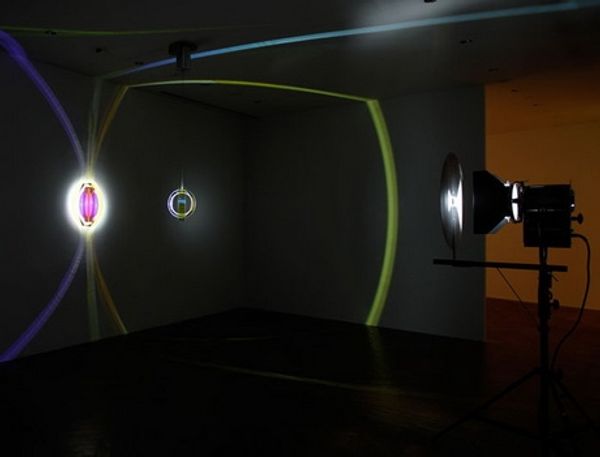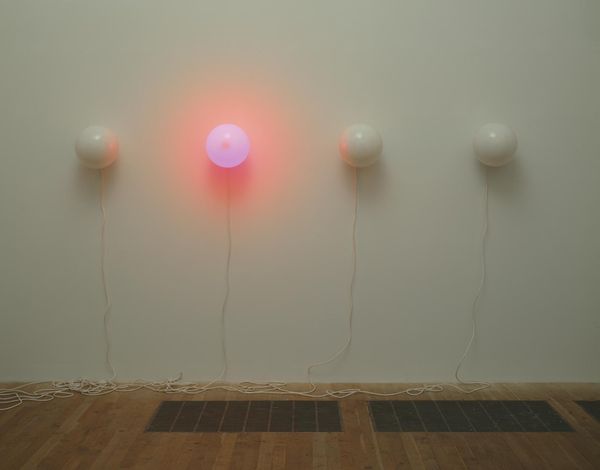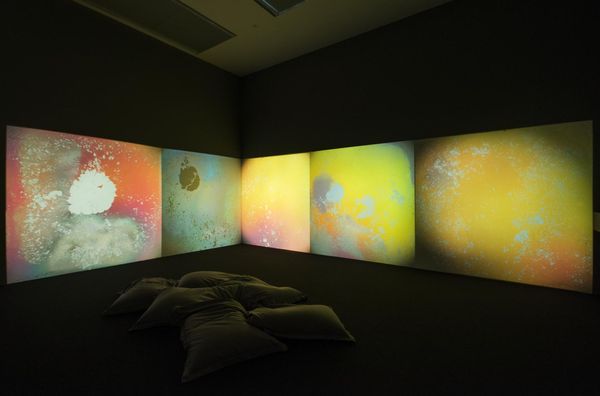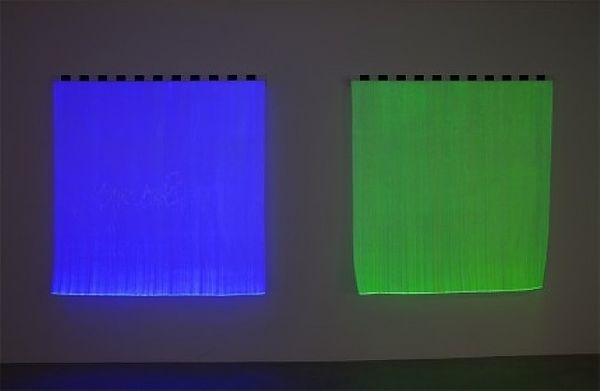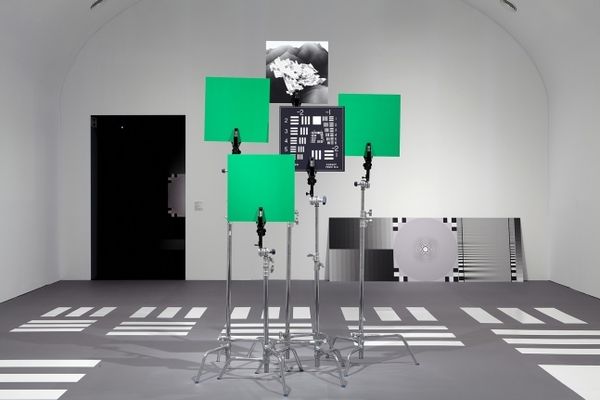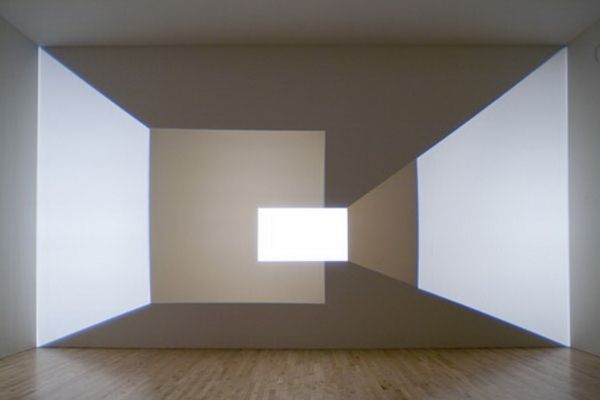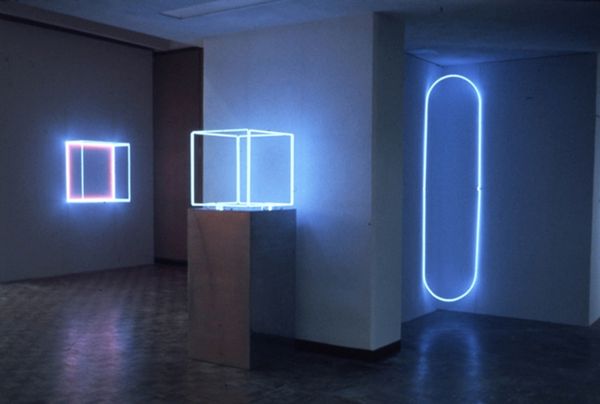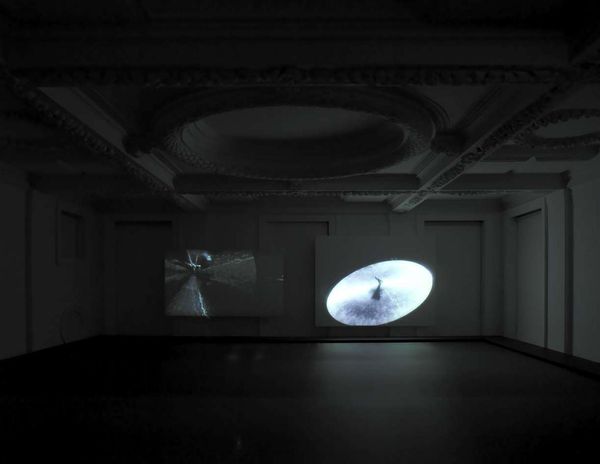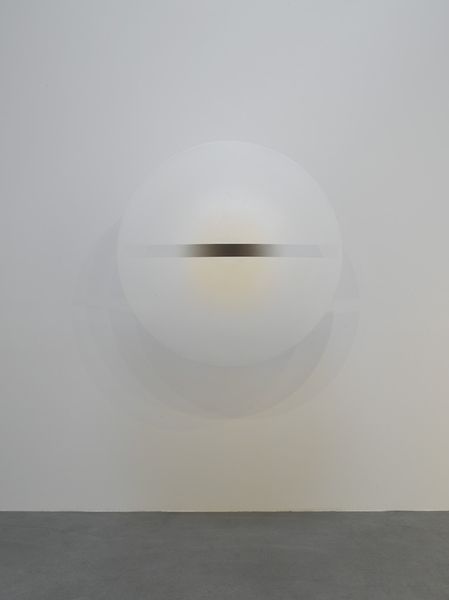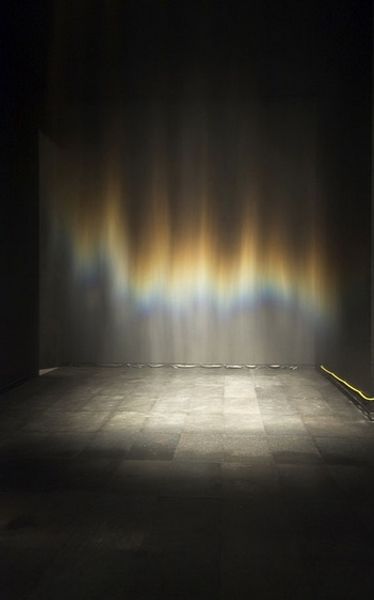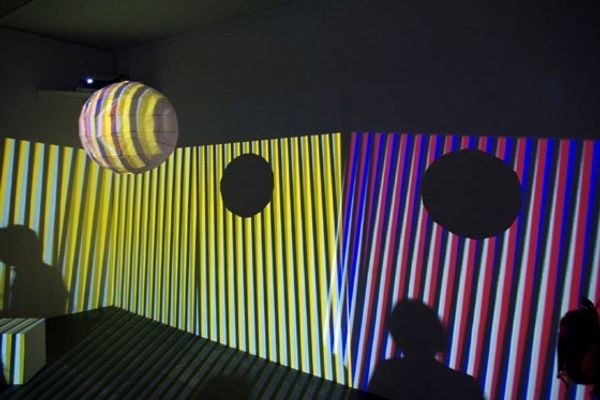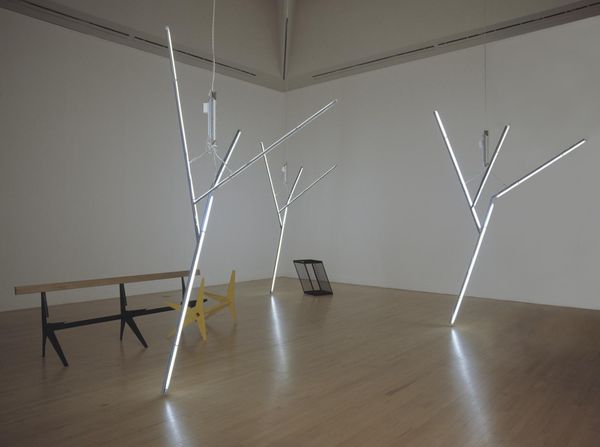
Dimensions: object: 750 x 750 x 4 mm, 6.5 kg
Copyright: © Olafur Eliasson | CC-BY-NC-ND 4.0 DEED, Photo: Tate
Editor: This is Olafur Eliasson's "Yellow versus Purple." It features colored discs and light, creating an immersive environment. It feels like a studio setup, exposed and raw. What's your take on its materials and construction? Curator: The visible apparatus is key. Eliasson reveals the means of production, the labor involved in creating this illusion. It's not just about the colours, but about the deconstruction of spectacle. Editor: So, it's more about the process than the final image? Curator: Precisely! The materiality – the lights, the gels, the simple mechanics – these are foregrounded, challenging the consumption of art as a purely visual experience. We are invited to consider the making. Editor: I see! It reframes how we think about art, focusing on the physical act and less on the finished object. Curator: Exactly. And by revealing these components, it engages us directly with the labour and the resources required for such an experience.
Comments
tate 6 months ago
⋮
http://www.tate.org.uk/art/artworks/eliasson-yellow-versus-purple-t11806
Join the conversation
Join millions of artists and users on Artera today and experience the ultimate creative platform.
tate 6 months ago
⋮
DO COLOURS EXIST WHEN WE ARE NOT LOOKING AT THEM? Why don’t you walk through this space? Look at the shapes and colours that cover your body. Olafur Eliasson uses space, colour and light to create his works. Here, the light shining through the rotating disc of glass makes a yellow shape on wall. At the same time a special filter on the glass reflects the light, and creates a purple shape that orbits the room like a planet. Why do you think the artist has chosen to use yellow and purple? When you stare at something bright yellow, and then at something white, you see a purple ‘after image’. ‘Colour doesn’t exist in itself, only when looked at. The fact the “colour”, uniquely, only materialises when light bounces off it into our retina indicates that analysing colours is in fact analysing ourselves.’ Start Gallery caption, 2016 Gallery label, July 2017
